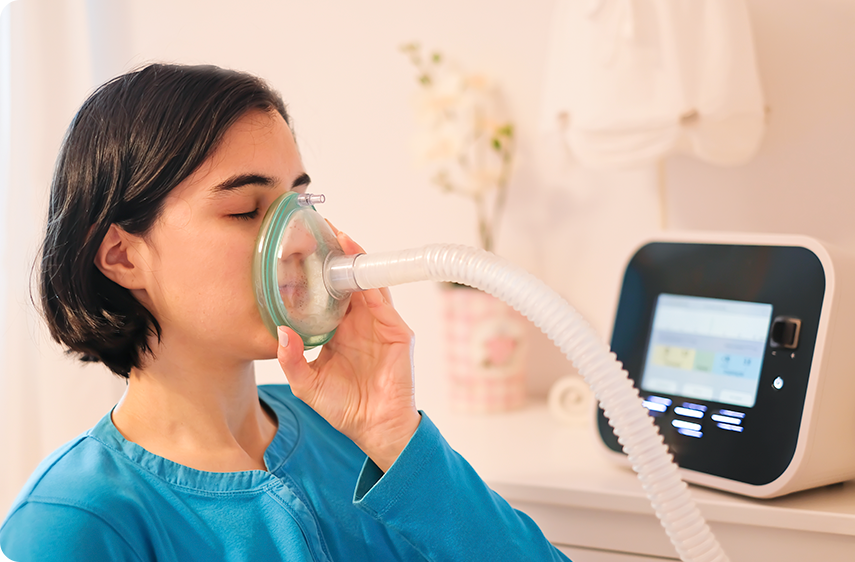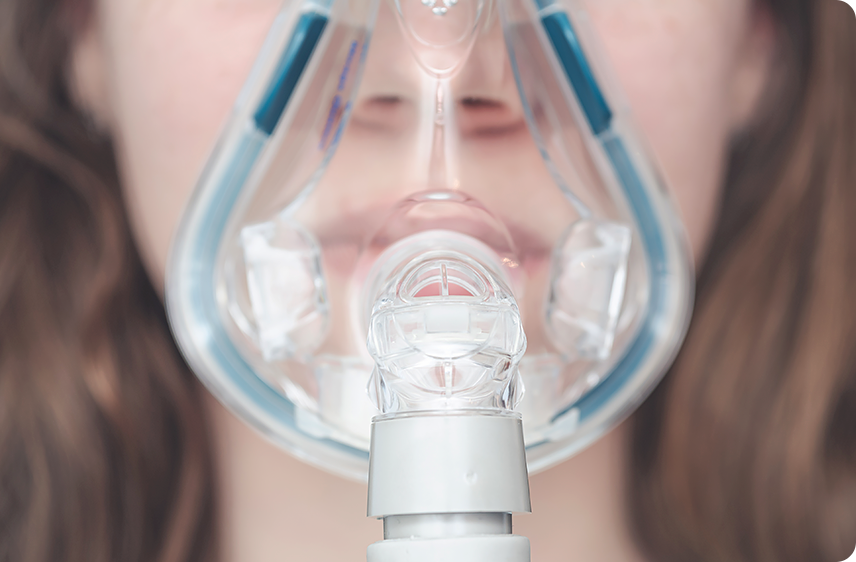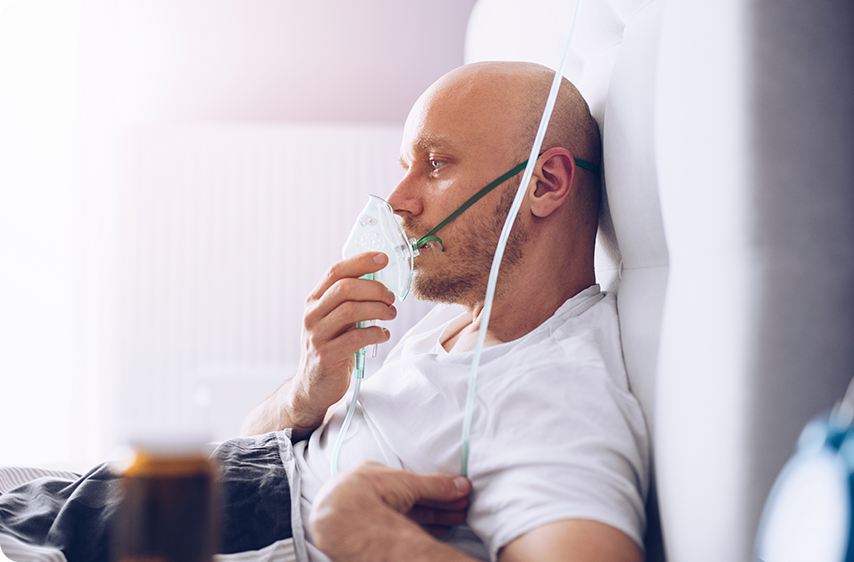VAPS Treatment
VAPS units automatically adjust pressure support to maintain an optimal consistent tidal volume in which IPAP automatically increases or decreases to maintain an idealized target tidal volume. The pressure support (the I-E difference) required for an adequate tidal volume may vary for a given patient during the night or from night to night depending on changes in the patient’s muscle strength or function (including changes during REM sleep).
Two VAPS devices are currently available in the United States: Average Volume-Assured Pressure Support (AVAPS, marketed by Phillips Respironics) and Intelligent Volume-Assured Pressure Support (iVAPS, marketed by ResMed). Our Center generally employs the AVAPS device to treat patients for whom hypoventilation (elevated CO2) is a primary feature. Conditions we treat include obesity hypoventilation syndrome, neuromuscular disorders, and chest wall disorders, especially hypoventilation syndromes that have responded suboptimally to prior BPAP titrations.
VAPS titrations enable the selection of a level of EPAP that eliminates obstructive respiratory events while documenting that the device has delivered an adequate tidal volume. Newer units automatically identify and set optimal levels of EPAP, relieving the technologist of the task of manually identifying and setting EPAP levels that eliminate obstructive respiratory events over the course of the titration night.





